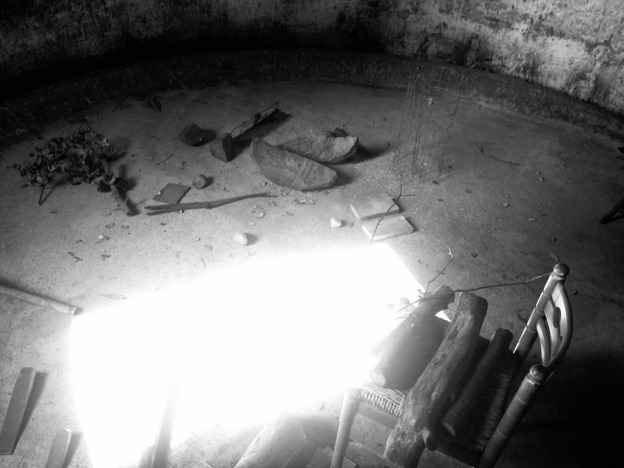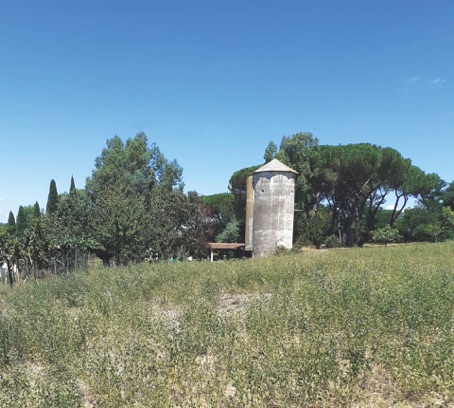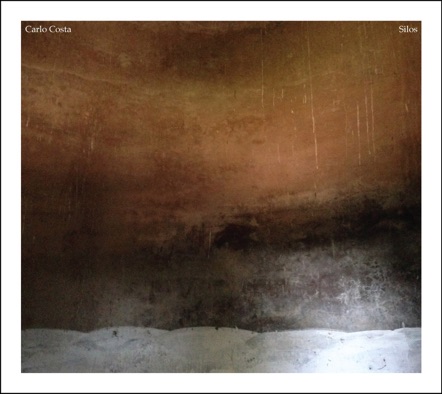

Neither/Nor Records
Carlo Costa interviewed by Flin van Hemmen in March 2021 for the release of Silos (n/n 0015)
Flin van Hemmen: What was it about the silo that first drew your attention?
Carlo Costa: The silo where I recorded the track has actually been part of my life since I was seven years old. My parents bought an old rundown farmhouse north of Rome in the late eighties and the silo was on the property. The farmhouse was fixed up and we moved into it while silo instead has pretty much been left in its original state to this day. It was unused for many years, filled with all sorts of debris and housing a colony of pigeons. I guess the first time I really considered making music there was while I was on vacation in Rome in the summer of 2017. The silo had been cleared out recently and I just stepped in it for the first time in years. As I started fooling around with the reverb, making sound with my voice and whatever object was at hand, I was immediately taken by the acoustics. That's when I started thinking of recording something in there. Eventually I made plans to record there the following summer. It's funny that almost thirty years had to pass before I really took notice!
FvH: By going for a full-on silo exploration, you bypassed a big chunk of a carefully developed vocabulary on your percussion setup. How was it different, and how was it similar? and how did it feel?

Simultaneously I also decided not to work out a piece or to prepare much at all other than order the objects in the space. As much as free improvisation has been my main focus for the past several years, in solo performances I often play pieces that are to some degree worked out. Even when I perform a completely improvised solo set I usually utilize my vocabulary of sounds as you pointed out. So this was a bit different.
The main difference I'd say is that when I prepare a solo piece and utilize sounds and techniques that I practice meticulously I inevitably end up having some expectations and this can influence me negatively while playing. If I'm not in the right state of mind and able to rid myself of these expectations and inhabit the moment it can lead to a trap: I am suddenly trying to get to something rather than being fully present and letting the music flow. Sometimes when I have less I can rely on, I am rid of expectations and am able, in a way forced, to be in the moment. I guess the ideal would be to be able to maintain this mental attitude in all situations, but I do find that in settings such as this one it can be easier to do.
I know you often forgo a familiar set up yourself. I've seen you often change your setup in rather limiting ways right before performing. Do you do it for similar reasons?
FvH: It feels like certain settings request or require it. That's what starts that conversation for me. Do I, or do I not set up that snare stand, or what would best speak this language we are about to embark on?
This may seem ridiculous to some, but familiar setups (such as the drum set) have much connotation, and sometimes I look to disconnect from that. Having less to rely pushes us to find the underlying pulse of things, and when you find it, you can go back to the drum set.

CC: They are cicadas actually. In Rome they are very active in the summer and live on trees. Close to the silo there are large stone pine and eucalyptus trees, that’s why you can hear them so clearly in the recording. I love their calling song, and having grown up hearing it I feel a special connection to it.
When I heard how present the cicada song and other external sounds were inside the silo, I realized that I could stop playing or do very little and there would still be so much music, so many interesting sounds and juxtapositions. While setting up to record I decided to attempt to inhabit a space somewhere between performance and field recording. Having that frame of mind and allowing the environment not only to influence the music but to come to the foreground was quite enjoyable and in a way liberating. I felt like the thread, the continuity was all there already, I could simply experiment freely and add some events.
FvH: Yes! Exactly. It took a pandemic for me to commit to playing outside, and it’s that very lesson that started to dawn on me. Very liberating, forcing a thread or preconceived agenda simply doesn’t vibe with nature. Besides the ‘great outdoors’, have there been other artists who inspired you in this direction?
CC: Surely the work of a few musicians I admire influenced me. I can think of Ben Gerstein, Toma Gouband, Jim Denley, Aki Onda but also people closer to me as yourself and Sean Ali. I think all of these people have a special way to position themselves in a particular environment, interact with it and activate a space through sound and motion.
FvH: I heard film director Lucretia Martel describe ‘plot’ as ‘just the sea foam’, which really spoke to me.
Did the silo environment influence your sense of narrative and/or your sense of overall ‘arch’?
CC: That’s a nice way of putting it. It brings to mind the subjects in Cezanne’s or Morandi’s still lifes. The objects are the same, but reordered and captured in a slightly different light or angle. There certainly is an attachment to those particular shapes and objects, but the subject itself is just the surface of the panting. It’s just a means to initiate a deep exploration of nature, color, shape, light, etc. As a listener and player I tend to place quite a bit of importance on the development of an improvisation, but I think that anything can work as long as a performer is fully present in the moment and the music unfolds naturally. In such a case, which of course is an ideal to aspire to, the narrative and shape of a piece become secondary, they are just the product of the flow to which the performer surrenders to.
To answer your question: yes, definitely! In this case the whole environment had a big role in shaping the music, in a way it was everything. Besides the special acoustics and ambiance of the silo, there were the smells, the heat, the bright sun, the sounds of the Roman countryside, and the memories and nostalgia that all of these stir in me. I explicitly wanted to let the environment guide the performance, and I think that it resulted in the piece sort of having no shape, no beginning, no end, just a few episodes... like watching the clouds go by.
Photo credits and information:
The album cover is by Carlo Costa. The image is a photo of the inside wall of the silo where the album was recorded.
The black and white photo is also by Carlo Costa and was taken at the recording session.
The outdoor photo of the silo is by Gerogia Fraleigh and was taken sometime in the summer of 2020.
